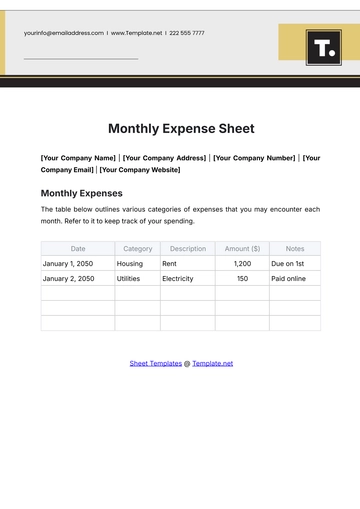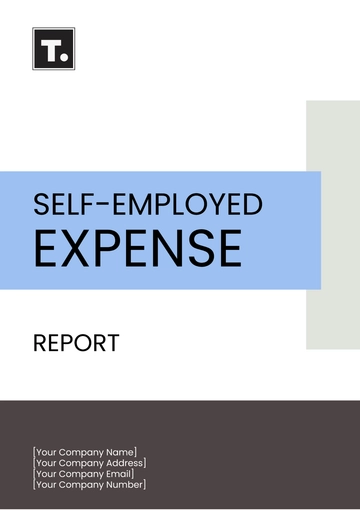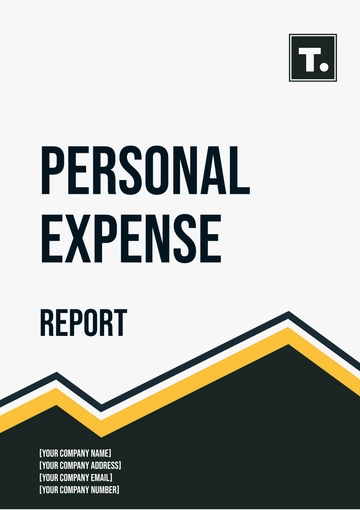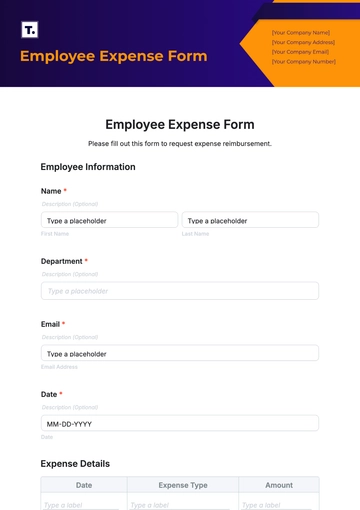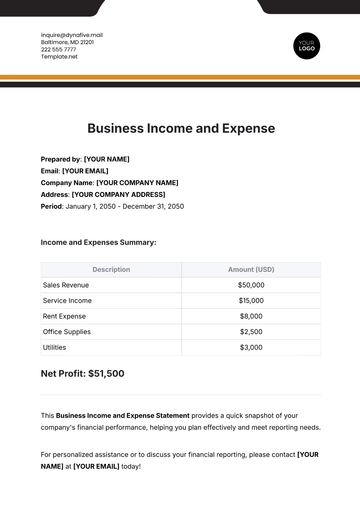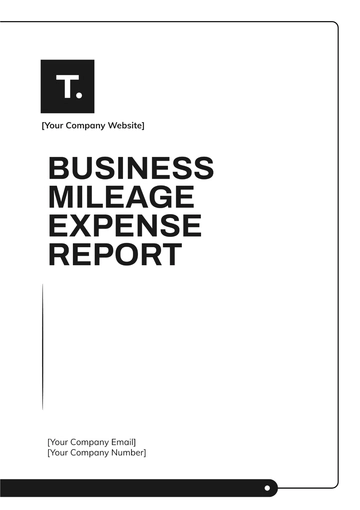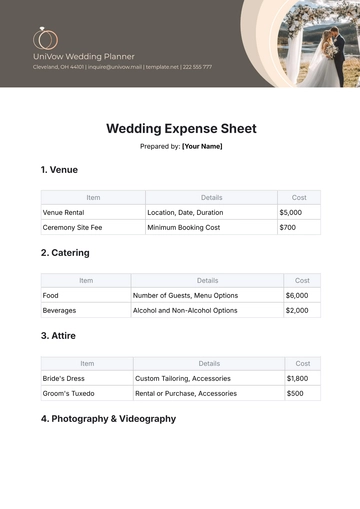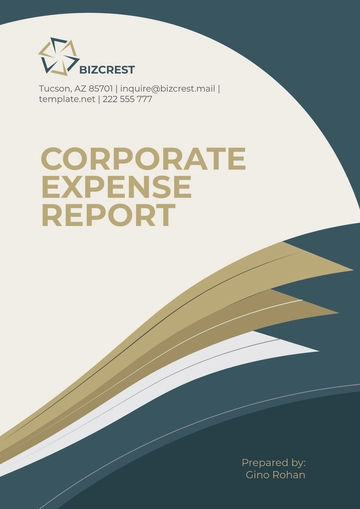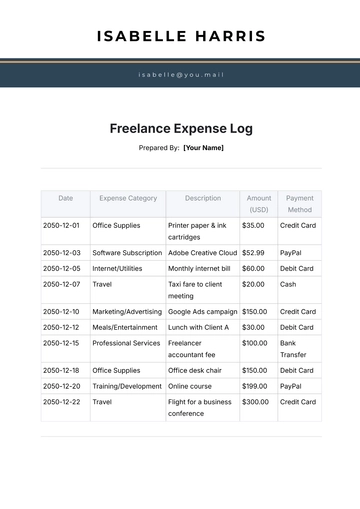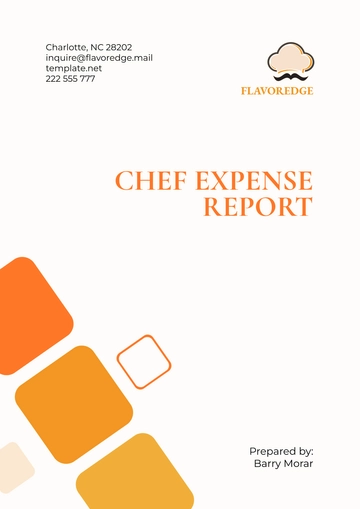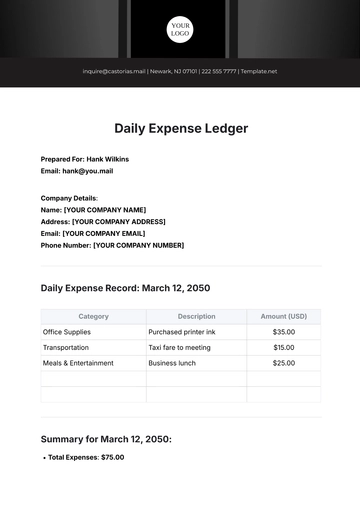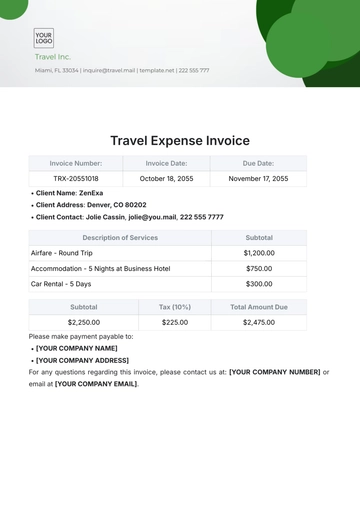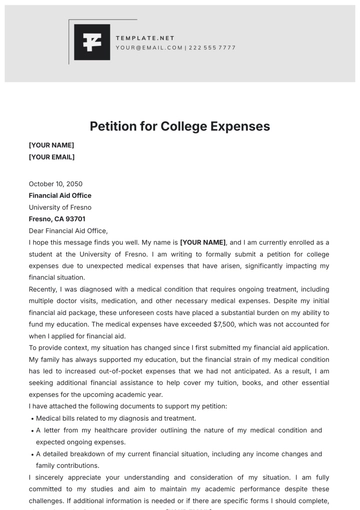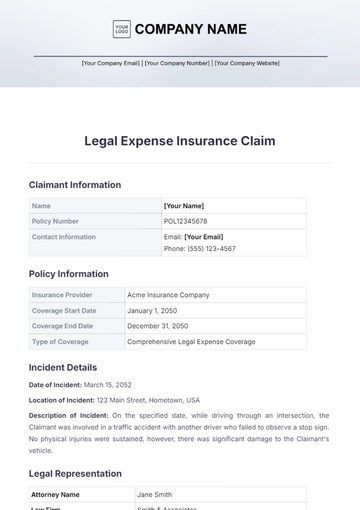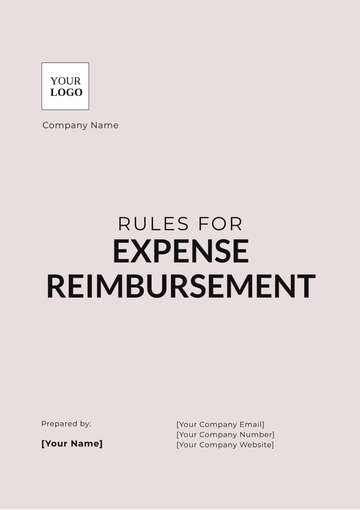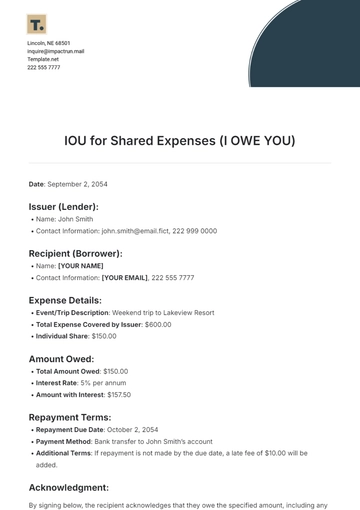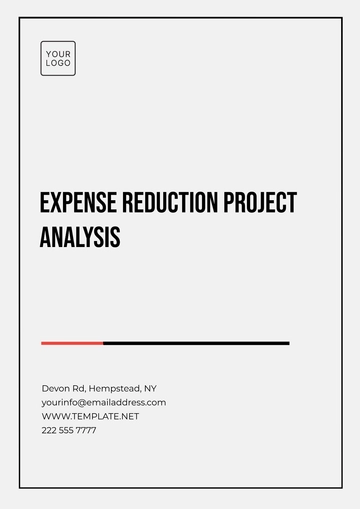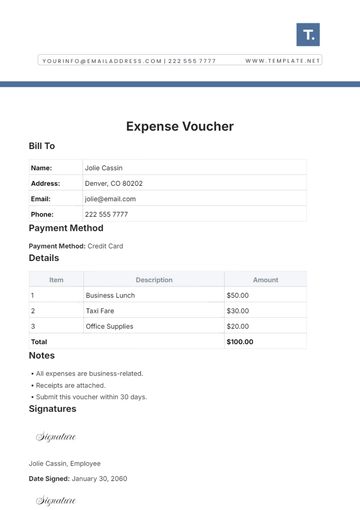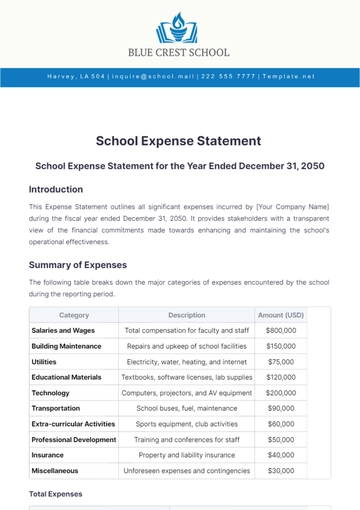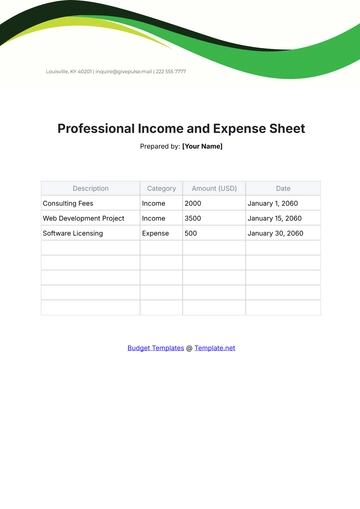Free Expense Report

Date: August 28, 2054
Employee Information:
Name: Marianne Smith
Department: Marketing and Sales
Employee ID: E-80146
Contact Information: [YOUR COMPANY EMAIL]
Report Overview: This Expense Report is submitted for reimbursement of out-of-pocket expenses incurred during business activities from July to August. All expenses listed below are related to company-approved activities and have been documented with receipts and supporting information.
Expense Summary
Date | Expense Category | Description | Amount | Receipt Attached |
|---|---|---|---|---|
2054-08-01 | Travel | Taxi fare from airport to hotel | $45.00 | Yes |
2054-08-02 | Meals | Lunch with client | $75.00 | Yes |
2054-08-03 | Lodging | Hotel accommodation (3 nights) | $360.00 | Yes |
2054-08-04 | Office Supplies | Presentation materials | $22.00 | Yes |
Total Amount Requested for Reimbursement: $502.00
Details of Expenses
a. Travel
Date: 2054-08-01
Description: Taxi fare from airport to hotel
Amount: $45.00
Receipt: Attached (Ticket #12345)
b. Meals
Date: 2054-08-02
Description: Lunch with client
Amount: $75.00
Receipt: Attached (Invoice #67890)
c. Lodging
Date: 2054-08-03
Description: Hotel accommodation (3 nights)
Amount: $360.00
Receipt: Attached (Booking Confirmation #11223)
d. Office Supplies
Date: 2054-08-04
Description: Presentation materials
Amount: $22.00
Receipt: Attached (Purchase Receipt #44556)
Additional Information
Purpose of Expenses: All expenses were incurred in connection with business activity, including travel to the meeting location, client lunch, and necessary supplies for a presentation.
Approval: [YOUR NAME] has approved these expenses as per company policy.
Attachments
Receipts and documentation for all expenses listed are attached.
Certification
I certify that the expenses listed above are accurate and were incurred for business purposes in accordance with company policy. I have attached all necessary receipts and supporting documents.

Marianne Smith
Employee
Date: August 28, 2054
- 100% Customizable, free editor
- Access 1 Million+ Templates, photo’s & graphics
- Download or share as a template
- Click and replace photos, graphics, text, backgrounds
- Resize, crop, AI write & more
- Access advanced editor
Introducing the Expense Report Template, exclusively on Template.net! Tailored for financial tracking, it's fully editable and customizable to meet your expense reporting needs. Seamlessly integrate data and insights using our Ai Editor Tool, ensuring accuracy and efficiency in documenting expenditures. Simplify your expense reporting process with precision and ease!

